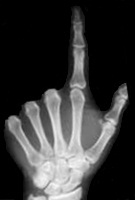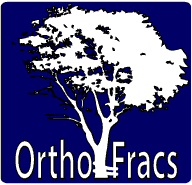Journal Club
April 2010
Novel approach to repair of achilles tendon rupture: Early recovery without postoperative fixation of orthosis
Tadahiko Yotsumoto, Wataru Miyamoto and Yuji Uchio
Orthopaedic Department, Shimane University School of Medicine
The American Journal of Sports Medicine, Dec 2010
Nil funding conflict of interest declared
Reviewed by
Dr Owen Mattern
MBBS | Unaccredited Orthopaedic Registrar
Introduction
- Investigate the effectiveness of using their locking suture method with a braided polyethylene-blend suture (5 Fibrewire) on early mobilisation following acute achilles repair
Methodology
- Case series (level 4 evidence)
- Jan 04 - Oct 06 all patients with acute achilles rupture
- 20 patients
- Do not comment whether retrospective or prospective
- Jan 04 - Oct 06 all patients with acute achilles rupture
- Operative Technique
- Prone
- Core suture using “side-locking loop technique”
- 5 fibrewire
- Reinforced 3-0 vicryl and 2-0 prolene
- Paratenon repaired 3-0 vicryl
- ALL DONE WITHIN 3 DAYS
- Prone
- Post OT
- No post OT slab
- Active and passive exercises day 1
- PWB within 1/52
- Using heel raise if needed
- WBAT 4/52
- 6/52 double legged heel raise
- 12/52 return to sport and manual labour
- No post OT slab
- Evaluation
- Achilles tendon rupture score
- 4,12, 24 weeks
- 4,12, 24 weeks
- Time recorded when
- ROM = normal side
- Walk normal
- Double-legged heel raise
- 20 continuous single-legged heel raise
- ROM = normal side
- MRI
- 4, 8, 12 weeks
- 4, 8, 12 weeks
- Achilles tendon rupture score
- Statistics
- Descriptive data only
- Means +/- SD
Results
- Demographics
- 20 patients
- Age 43.4 (16-70)
- F/u 2.9 years (2-4.8)
- Cause of injury
- Sport (15) - badminton, volleyball, baseball, soccer, aerobics, Japanese fencing (Kendo)
- Work (5)
- Sport (15) - badminton, volleyball, baseball, soccer, aerobics, Japanese fencing (Kendo)
- 20 patients
- Results
- No complications
- ROM normal - 3.2/52 (SD 0.7)
- Walk normal - 4.5/52 (SD 0.7)
- Double legged heel raise - 6.3/52 (SD 0.6)
- 20 single leg heel raise - 9.9/52 (SD 1.7)
- Sport 15.4/52
- Manual labour 12/52
- No complications
- MRI
- T2 signal intensity
- 0% 4/52,
- 45% 8/52,
- 95% 12/52
- AP diameter twice as big as normal at 12/52
- T2 signal intensity
Discussion
- Have been able to achieve high tensile strength using side locking suture technique with fibrewire
- Comment that immobilisation may be required for large defects and chronic tears
- State they had ‘accelerated healing’ based on MRI results
- Note limitations
- Limited numbers for complications
- Not a comparison study
- Only indirect/subjective strength measurements taken
- Non-blinding of radiologist in reading MRI
- Limited numbers for complications
Pros of Study
- Technical case series
- Clear description of surgical technique, materials and post-operative rehab
Cons of Study
- Do not state who oversaw rehab post injury or how often patients were reviewed post-operatively Is only a technical note case series
Take home message
Young patients with acute tears treated early may be able to be mobilised early
Webpage Last Modified:
24 May, 2010



